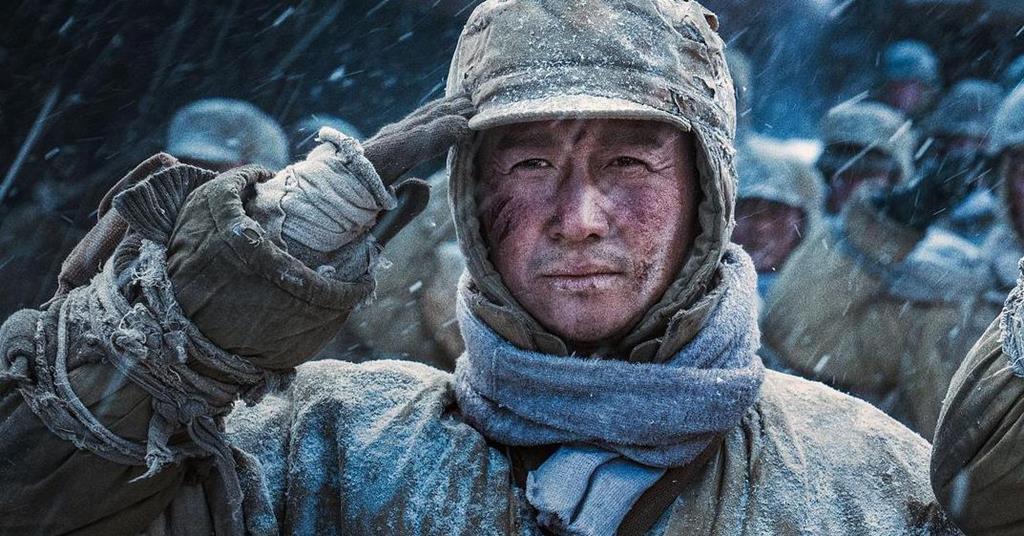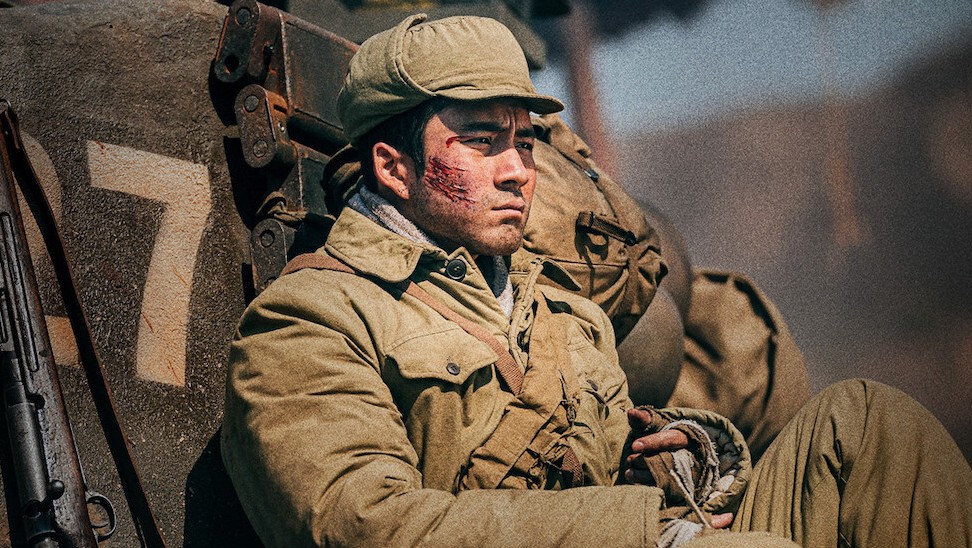Go behind-the-scenes of our team’s work on ‘The Battle at Lake Changjin, now the highest grossing Chinese film of all time!
Our talented teams around the world delivered some spectacular VFX sequences for ‘The Battle at Lake Changjin’, crafting and augmenting stunning battle scenes to support the narrative. Watch our brand-new VFX Breakdown now, then catch up with Lee Sullivan (DNEG VFX Supervisor) and Philipp Wolf (DNEG Executive VFX Producer) about our team’s work on the show.

1. Tell us a little bit about ‘The Battle at Lake Changjin’?
LS: It’s an intense film about the Korean War, told from the point of view of Chinese and American soldiers on the ground in combat. To deliver a film of this scope in the timeframe required, the show was split into three units, each helmed by a top-tier director. DNEG worked exclusively with Dante Lam, who is known for his combat films featuring tight-knit commando groups.
The story starts with the Battle of Inchon, which was also DNEG’s first sequence. Featuring thousands of soldiers in formation on the beach, the sequence shows UN forces bombarding the city from the air and sea, and unloading equipment and vehicles on a massive scale. The film then follows the war inland as Chinese troops join the battle. It is here that DNEG had another major sequence, in which American planes bomb a bridge on the Yalu River and destroy a Chinese transport train. Then we follow the Chinese battalion to a village where they engage in vicious close combat to repel an American force and blow up a signal tower. Finally, following a bloody retreat from Lake Changjin, the American Marines withdraw to their troop ships at Hungnam and blow up the port as Chinese forces flood in.
We have had so many films about WW2, it has been interesting to dive into what’s often referred to as ‘The Forgotten War.’
PW: Working with Director Dante Lam, we focused on some of the film’s most pivotal battle sequences. DNEG started working with Dante and the VFX team Craft Creations, led by Dennis Yeung Kit and Francine Gao, early on to design those sequences based on the script and storyboards created by production.
LS: When I started on the film just after New Year 2021, our previs team in LA had already started. Their work was essential in fleshing out the CG-heavy Inchon Landing sequence. My initial plans to work on set were blocked by COVID limitations, but this enabled me to closely supervise the full-CG shots we were already working on by mid February.
2. ‘The Battle at Lake Changjin’ has become the highest grossing Chinese film of all time! How did working on this show compare to our usual work on Hollywood blockbusters?
LS: It was amazing to see how quickly the filmmakers could ramp up this massive production and deliver such an ambitious film. Even with the tight schedule, epic scope and scale of production builds, massive on-location sets were being built and shot at an incredible pace. Shot from February through late May, DNEG received the bulk of the turnover and delivered the last finals mid-August.
Such a tight schedule in post is always challenging and it meant that our team needed to do many things simultaneously, figuring out how all of the shots and beats work while they’re still editing. Time was the biggest challenge, but we were lucky to have the Chinese VFX team Craft Creations led by Dennis and Francine who helped us understand Dante’s directing style and areas of concern. Filmmakers come to DNEG for top-quality VFX and they knew that this film was going to be big, so we all pushed hard to make it visceral and real.
PW: Looking back, the scope of the film — which turned out to be two films in the end — was truly astonishing. It really was a massive undertaking for all parties involved in its production. While the box office success of the film is amazing to see, I’m equally amazed by the sheer scope and scale of the end product that ultimately made it to the screen.

3. Global teamwork played a big part in the making of this film. Can you tell us a bit about your collaboration and day-to-day workflow?
LS: Given how much work we had to do in parallel and the tight turnaround, I can’t emphasise enough the importance of our cross-site teamwork. We have challenging time offsets between Montreal, Beijing and Mumbai, but once you get into a rhythm it goes like clockwork.
The key is to establish clear channels of communication and ensure your local teams are guided and empowered creatively to take things to the next level. The tight turnaround on this film would already have been challenging under pre-pandemic conditions, where you can see your colleagues in person and have that fluid flow of interaction around the office.
So with the limitations of WFH, it was a testament to our production team that we were able to set up all the dominos to fall in perfect sequence. I had a great collaboration with my fellow supervisors Karim Sahai, Sameer Malik, Mohinder Subramaniyam, and Nicolas Dumay; and the production team especially Philipp Wolf, Abigail Everard, Cassius Vaz, Akash Roy and Marzun Patel.
PW: This project outside of a global pandemic would have been a challenge to produce, but during a pandemic with people working from home? – A true masterpiece. We had about 1,300 people working on this project over several locations at DNEG. Without my Production team, Abigail Everard, Akash Roy, Marzun Patel and Cassius Vaz leading their respective units, this project would not have been possible. Abigail was my right-hand in making sure the whole production remained on track, and though we were working with a compressed timeline, we didn’t miss a beat.
4. What do you think is the “magic sauce” behind DNEG’s work on this show?
LS: The special sauce was definitely the high level of motivation of the team. Our crew was incredibly dedicated and driven on this film, and I am truly proud of our work and grateful to the team for working so hard to make this film a success!
PW: 100% agree with Lee, without everyone’s dedication this would not have been possible. I cannot thank everyone who participated enough.

5. Do you have a favourite shot or sequence you worked on?
LS: My favourite sequence was the Yalu Bridge, which was shot in a valley north of Beijing. It starts with a CG Chinese troop train travelling down a CG track, crossing a CG bridge and river, seamlessly added to the location plates. The train stops due to obstructions on the track and then the tension gradually builds as American bombers take out the bridge and then come after the train.
Dante is very exacting about armaments so we had to nail the look of the conventional and napalm bomb impacts. The train bombing shots were very complex, with the shockwave throwing trees, equipment and crowd-simulated soldiers into the air, and totally shredding the train cars; this extremely complex beat all came together in four weeks from layout to comp. It’s a very intense sequence!
PW: The opening shot of the movie. We are establishing the American-led U.N. forces landing and attacking the shore in North Korea in an approximately 30 second Full CG shot. This first shot ended up being the last shot we delivered, and it posed quite challenging for every department due to its complexity.
6. Do you have a favourite memory or interesting story about your time working on this show?
LS: My favourite memory was getting to come into the office to do sequence reviews on the Big Screen! After months of WFH, it was great to escape out into the real world, but it was so surreal to be in downtown Montreal with the streets completely deserted; it felt like I was in a post-apocalyptic movie…
PW: My favourite moment was when I realised that everyone working on this movie is kind of in sync. Everyone was going for this common goal. Supervisors, Leads, Production, everyone led by example – like a well choreographed dance routine.